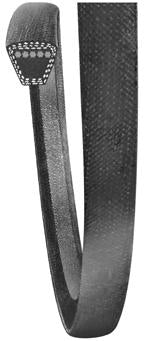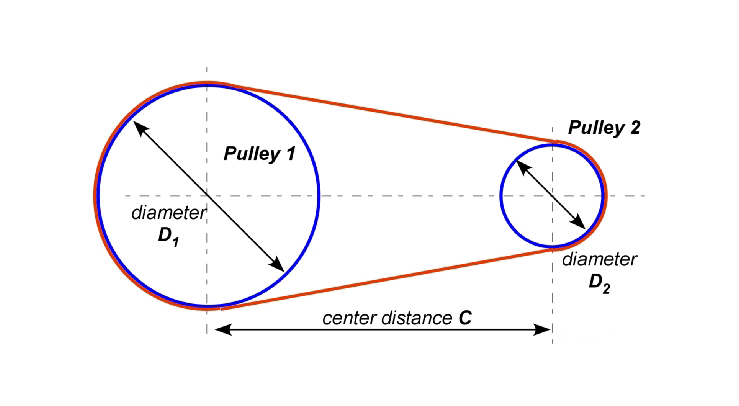split tenth
Hot Rolled
- Joined
- Sep 19, 2007
- Location
- mesa arizona
I need a vee belt for a 9 inch horizontal drive South Bend lathe.C1670R 4.5 foot bed 13670KAR8, Part number and size.Thank anyone for any information.
Follow along with the video below to see how to install our site as a web app on your home screen.
Note: This feature may not be available in some browsers.
Your lathe is a 10K(Light Ten) not a Workshop 9-inch by the Catalog Number(CL670R and the serial number, it's a 1968 HMD with a flat belt cone drive, so I can assume you need a motor to counter shaft pulley v-belt. They didn't list the numbers as specific to the lathe most of the time.I need a vee belt for a 9 inch horizontal drive South Bend lathe.C1670R 4.5 foot bed 13670KAR8, Part number and size.Thank anyone for any information.
You get what you pay for on that garage shop stuff.likely you can't go by the model's original belt because someone may have replaced a pulley.
I was trying to answer the OP's question...hence the part numbers. I'll correct you on L belts, Most of South Bend's belt part numbers that were 3, 4 and 5L for the year of his lathe did reference the belt OC, as in the examples I gave. I was trying to give enough info so as he could measure the belt and choose a belt length nearest to the listed numbers. I'll go a little farther...and be a little more specific, but I can't measure his pulley sizes or his belt length as you stated, therefore I'm hesitant to suggest a belt length for him. That being said, the 10K he has is a 12 speed, so it has the style 2A two speed pulleys. The most common pulley for the 670 was PT2131NR1, there were more than one. We all know the trick of replacing the drive pulleys with a 50 hertz one to get a little more speed, but the later models' common pulleys were 2.237 / 3.956 OD's, they all were 0.635 ID width at the top. That means in their part numbers it was a 5L belt. Now here's where he needs to get the accurate measurement, the most common belt listed in my sn files is a 5L430, and since 5L belts are measured from their OC, it's a 43-inch belt. But that's not the only belt they used. I did find a lathe close to his serial number (1968) that listed a 5L440, which of course is 44-inches and was the common belt used on the Workshop 9-inch since the early 1950's. In some older lathe specs. I found a 5L380 for a C model, which had the same 2131NR1 pulley and a 1950 with a non "L" number 3380, then a 57 with a 4538 with the same pulley. So, the range is too far apart to suggest a length. Back to belts, I do think it would be easier for him to try to get the best OC measurement he can with let's say a seamstress tape and see which belt length is the closest. after that he can deduct the 3-inches and order a "B" belt if he would want to improve the power transfer. If he had the serial card, it has the belt number listed on it for cross reference, but I would still go by the OC of an "L" measurement to determine the length because it has flat pulleys on the counter shaft, then compare the specs to a B belt with the same OC measurement.You get what you pay for on that garage shop stuff.
This is the way to do it:
Pulleys and Belts - Inch
Visually calculate pulley size rpm belt length and speed wwith animated scaled diagrams - Inchwww.blocklayer.com
Then you have to decide what type it is and if you need metric and/or cogged.
Metric sizes have a height that is a little more than classical belts.
Like for Type A:
Classical:
Width = 0.5 Height = 5/16 (.312)
Metric:
Width = 13mm (.511) Height = 10mm (.393)
The outside circumference is not going to be a direct part number.
For a simple conventional type, A V-belt it might be specified as A68.
The 68 means the datum length of 68 inches, the circumference of a radius within the belt.
The outside circumference would be 70 inches.


I have to deal with that because a old heavy motor is sitting on a mount with slots. The motor is wide that there is not much space for theYou generally won't need to be this accurate, but sometimes you are repairing some dumb design where there is a quarter inch of idler adjustment each way and you don't want to buy 7 belts, each a slightly different length.
I have been looking at V belts in the brands Gates and Carlisle.
Deciding if a cogged V belt will grip less than a solid V belt?
Is synthetic rubber better than real rubber?
A metric belt has more height than a normal height size, go for metric and get more gripping surface?
Adjustable ???
Accu-Link Adjustable Link V-Belt, 4L or A Profile, 1/2" Width, 4ft Length: Amazon.com: Industrial & Scientific
Accu-Link Adjustable Link V-Belt, 4L or A Profile, 1/2" Width, 4ft Length: Amazon.com: Industrial & Scientificwww.amazon.com
Used one of these on a band saw. Last I looked the red adjustable was not there anymore. Must have given it away.
I would like to know at what pulley ratio to start considering cogged. 3 to 1, 4 ro 1?You'll get better grip with a cogged V belt on a small diameter pulley. Otherwise , there isn't much of a performance difference.
It's not the ratio that matters, but the diameter of the pulleys. V belts are sometimes too stiff to wrap around the pulley and end up with a false sense of tension and uneven pressure around the pulleyI would like to know at what pulley ratio to start considering cogged. 3 to 1, 4 ro 1?
I agree, the cog belt has more flexibility with a smaller pulley and transmits more power in that case.It's not the ratio that matters, but the diameter of the pulleys. V belts are sometimes too stiff to wrap around the pulley and end up with a false sense of tension and uneven pressure around the pulley
I agree, the cog belt has more flexibility with a smaller pulley and transmits more power in that case.
Since I'm here and you are not, I was looking at my setup of 3 to 1 (6in to 18in diameter). Distance between them is 16in.It's not the ratio that matters, but the diameter of the pulleys. V belts are sometimes too stiff to wrap around the pulley and end up with a false sense of tension and uneven pressure around the pulley
IIRC cogged belts have the same strength and horsepower ratings as regular belts so I pretty much always buy those unless I have a compelling reason not to.Since I'm here and you are not, I was looking at my setup of 3 to 1 (6in to 18in diameter). Distance between them is 16in.
Smaller the distance and less contact on the small pulley.
I'm comparing belts here.
Metric cogged belts have the most sidewall area. They are deeper by 0.083 when new. And they are .011 wider at the top when looking at side view.IIRC cogged belts have the same strength and horsepower ratings as regular belts so I pretty much always buy those unless I have a compelling reason not to.
Notice
This website or its third-party tools process personal data (e.g. browsing data or IP addresses) and use cookies or other identifiers, which are necessary for its functioning and required to achieve the purposes illustrated in the cookie policy. To learn more, please refer to the cookie policy. In case of sale of your personal information, you may opt out by sending us an email via our Contact Us page. To find out more about the categories of personal information collected and the purposes for which such information will be used, please refer to our privacy policy. You accept the use of cookies or other identifiers by closing or dismissing this notice, by scrolling this page, by clicking a link or button or by continuing to browse otherwise.
